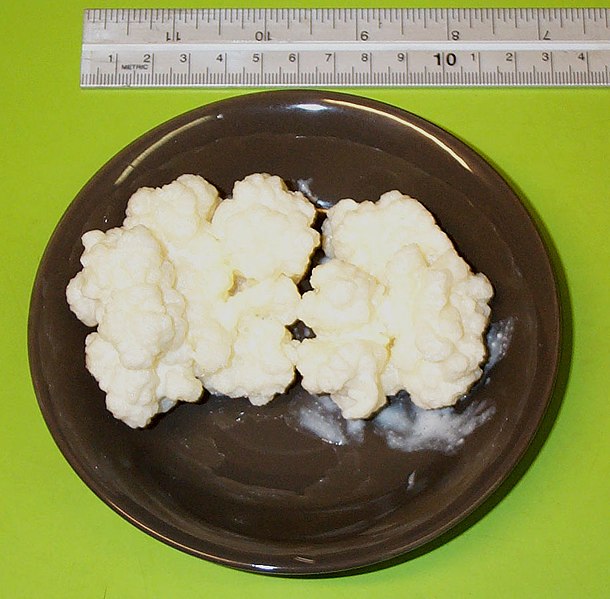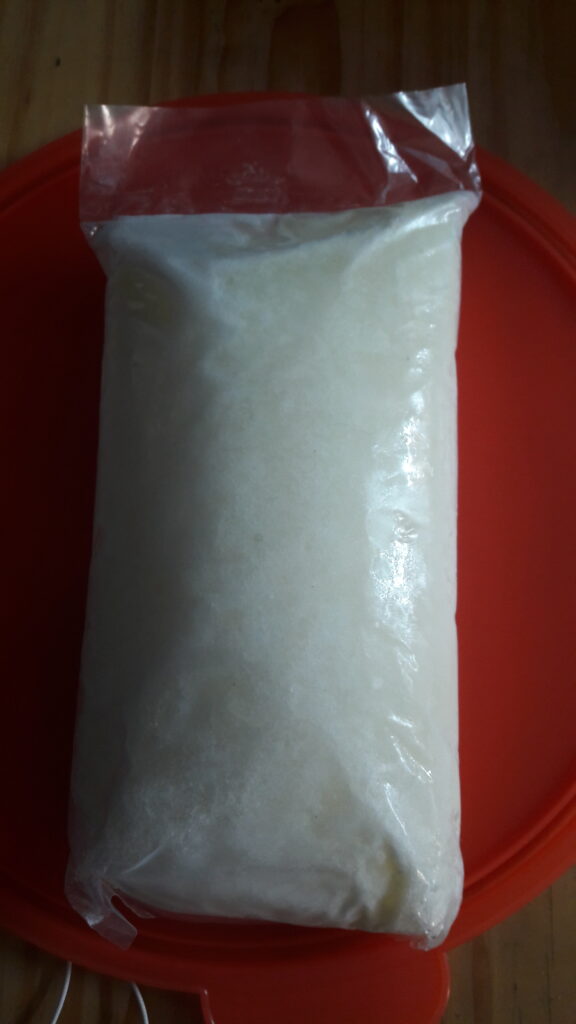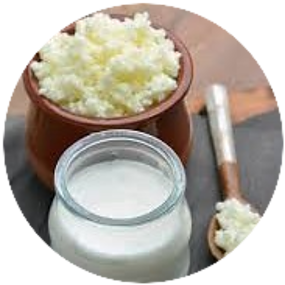In this article, The Good, The Bad And The Kefir, we are going to look at how Kefir, Both Milk Kefir and Water Kefir, Fight The bad, Supports the Good in your body and supports your health.
These two ancient probiotic cultures are far more readily absorbed by your body and have a pleasant taste when prepared correctly.
The Good – Nutritional Facts
Water Kefir
Serving Size: 1 cup
Per Serving:

- 61 calories;
- protein 0.2g;
- carbohydrates 15.9g;
- dietary fiber 0.6g;
- sugars 14.9g;
- vitamin a iu 0.5IU;
- vitamin c 1.6mg;
- folate 0.4mcg;
- calcium 16mg;
- iron 0.1mg;
- magnesium
- 5.5mg;
- potassium 39mg;
- sodium 7.7mg;
- added sugar 13g.
- Exchanges: 1 other carbohydrate
Milk Kefir
A 6-ounce (175-ml) serving of low-fat kefir contains (2Trusted Source):
- Protein: 4 grams
- Calcium: 10% of the RDI
- Phosphorus: 15% of the RDI
- Vitamin B12: 12% of the RDI
- Riboflavin (B2): 10% of the RDI
- Magnesium: 3% of the RDI
- A decent amount of vitamin D
Besides providing your gut with The Good Bacteria, it feeds the bacteria all the while boosting your immunity and keeping you hydrated. Not to mention, it is an awesome, flavourful alternative to commercial, sugary fizzy drinks that we consume today.
Kefir is cheap and easy to make at home in your family’s favourite flavour.
What about Glucose intolerance
Many people that are glucose intolerant ask this question and although called Kefir Grains, they are not a grain, as Wheat is, and Kefir is therefore gluten-free.
Kefir, with a minimal amount of lactose, could be consumed by people with a mild allergy. A non-dairy alternative kefir would be more beneficial to those with a more serious allergy.
Blood sugar control

In a very small study, conducted in Iran in 2015 where they compared the effects of consuming Kefir with conventionally fermented milk on blood sugar levels in people with diabetes, it was found that people that had consumed Kefir had significantly lower blood sugar levels than those participants that had consumed conventionally fermented milk.
In a 2020 review, it was suggested that Kefir could have a range of benefits for people with diabetes and obesity. It may modulate diabetes-related markers.
Older research from 2013Trusted Source notes that in laboratory studies, bacteria from kefir grains killed harmful bacteria such as Escherichia coli, Salmonella, and Staphylococcus aureus.
Kefir improves fatty liver syndrome by inhibiting the lipogenesis pathway in leptin-deficient ob/ob knockout mice (*1).
Can Kefir Cure Cancer
As much as I would love to say yes, The jury is still out on that one as the tests done were not conclusive.
Does Kefir Reduce Inflammation
Inflammation is caused by a number of diseases such as IBD or rheumatoid arthritis. The anti-inflammatory and immunomodulatory effects of probiotics have been reported in some studies, although this is an emerging area of research. It appears that the LAB bacteria are anti-inflammatory but whether that translates directly to Kefir is still unknown.
Are There Any Side Effects?

As the production of Kefir is done by many producers, one cannot confirm which strain was used so it is difficult to say generally how rich the kefir strain is in probiotics. In General. The most common side effect is that you may suffer from Diarrhoea, bloating or constipation. This is generally caused in some people whose stomach is not used to the Kefir.
It is best to start consuming kefir in small amounts, like 150ml a day for two or three days then gradually increase it. It might be best to add 150ml to a smoothie daily and then gradually increase the amount.
Anyone with a compromised immune system or a histamine intolerance should speak to a health professional before introducing or increasing their fermented food intake.
Kefir is also an incredibly effective treatment for people suffering from irritable bowel syndrome (IBS), Diarrhea Stomach ulcers and more.
Have you ever travelled and had to eat food that you were unaccustomed to, ending up with that dreaded “Traveller’s Stomach”? try consuming Kefir instead of commercial drugs. It Works!
Kefir Supports Your Immune System

Kefir: A protective dietary supplementation against viral infection
Coronavirus disease 2019 (COVID-19) is an infectious disease caused by a recently discovered coronavirus termed ‘severe acute respiratory syndrome coronavirus 2′ (SARS-CoV-2). Several scholars have tested antiviral drugs and compounds to overcome COVID-19. ‘Kefir’ is a fermented milk drink similar to a thin yogurt that is made from kefir grains. Kefir and its probiotic contents can modulate the immune system to suppress infections from viruses (e.g., Zika, hepatitis C, influenza, rotaviruses). The antiviral mechanisms of kefir involve enhancement of macrophage production, increasing phagocytosis, boosting production of cluster of differentiation-positive (CD4+), CD8+, immunoglobulin (Ig)G+ and IgA+ B cells, T cells, neutrophils, as well as cytokines (e.g., interleukin (IL)-2, IL-12, interferon gamma-γ). Kefir can act as an anti-inflammatory agent by reducing expression of IL-6, IL-1, TNF-α, and interferon-γ. Hence, kefir might be a significant inhibitor of the ‘cytokine storm’ that contributes to COVID-19. Here, we review several studies with a particular emphasis on the effect of kefir consumption and their microbial composition against viral infection, as well as discussing the further development of kefir as a protective supplementary dietary against SARS-CoV-2 infection via modulating the immune response.
Biomedicine & Pharmacotherapy
Had a Bad Day – Kefir May Improve Your Mood
May improve mood: “There have been studies linking kefir to an increase in serotonin levels and decrease in the risk for anxiety and depression,” Margolis says. “That’s because 90% of serotonin, along with other neurotransmitters, is produced in our gut and sent back to the brain via the vagus nerve – communication known as the gut-brain axis.” She adds that kefir also contains tryptophan, an amino acid that serves as a precursor to serotonin, helping to raise serotonin levels in the brain (via our circulatory pathway).

Some other ways that Margolis recommends using kefir include:
- Use your favorite flavor of kefir as the base for any smoothie or smoothie bowl recipe.
- Use kefir to makeover your breakfast by spicing up a bowl of cereal or granola, or mix it into pancake or waffle batter.
- Power up your overnight oats or chia seed pudding by using kefir.
- Choose plain kefir over mayo or sour cream to cut calories and fat, without sacrificing flavor in your favorite dips and dressings.
- Add a tangy and flavorful zip to soups, hummus, snacks and spreads using your favorite flavor of kefir.
- Use kefir as a base for your next protein marinade. Not only does kefir’s tangy flavor work well with herbs and spices to impart a fresh flavor, the lactic acid (in kefir) and the live and active probiotic cultures turn tough cuts into tender, juicy masterpieces.
- Give your desserts a probiotic boost with your favorite flavor of kefir. It serves as a great base for puddings, popsicles, ice cream, frostings and more.
Water Kefir
There is much speculation regarding the origins of Water Kefir. The general belief is that it originated in Mexico, where it was called Tibicos. This culture forms on the pads of the Opuntia cactus as hard granules that can be reconstituted in sugar water.
In documentation from the 1800s, there is a reference to Water Kefir Grains being used in a fermented drink made from the juice of the prickly pear cactus in Mexico. Be this as it may, there are stories that place the origin, or at least their use, in Tibet, the Caucasus Mountains, and the southern peninsula of Ukraine.
Because of the lack of recorded history in this regard, it is difficult to definitively pinpoint the place of origin of Water Kefir. Kefir cultures can be found throughout the world and no two cultures are exactly the same, making it difficult to establish their origins.

Is my Probiotic supplement as effective as water kefir?
Because the commercial probiotics on the market vary so in the quantity, number of CFUs and strains of microorganisms, it is very difficult to know whether a probiotic supplement is actually performing because the culture is dormant.
The Kefir Grains are a living probiotic that is active when it is consumed. This increases the chance of surviving in the stomach acid. Pasteurised Kefir does not have the same beneficial value of non pasteurised Kefir.
But a 2021Trusted Source systematic review of studies indicated that studies promoting probiotic benefits for diverticulitis are not sufficient to draw any meaningful conclusions. In other words, though probiotics may not hurt a person, they also may not provide any real benefit either. Currently, it is not clear which probiotic strains are most effective, or what dose and treatment time is most appropriate for people with diverticular disease.
People interested in probiotics can take them as a supplement, but they also occur naturally in some foods. These foods include natural yoghurt and fermented foods such as:
- sauerkraut
- kefir
- tempeh
- miso
- kimchi
The Bad Side Of Kefir
.

.
.
.
.
What…Nothing
Well, not really. If you are not used to it you might develop diarrhoea, Bloating or constipation. If you continue with the Kefir it should only last about 3 days a. As I stated earlier, start slowly and increase the vo\lume of Kefir slowly once your body functions have returned to normal.
Anyone with a compromised immune system or a histamine intolerance should speak to a health professional before introducing or increasing their fermented food intake.
Does Water kefir contain alcohol?
Most Fermented beverages are commonly known to contain alcohol. Water Kefir, however, is classified as a non-alcoholic beverage. After the first ferment, the alcohol content should be no more than .5% ABV. This will change with the second ferment and the amount of alcohol will depend on the amount of sugar and the length of time it is left to “ferment”.
Water Kefir Troubleshooting Tips

- Grains only need to be need to be rinsed between uses if there is it appears to have stings in it or other forreign “stuff” in it. I prefer to rinse mine every few weeks. this helps prevent any “other stuff”appearing or apearing in my Kefir.
- Kefir Grains obtained live from someone that produces unpasteurised Kefir will reproduceand may be used again and again. This cannot always be said about the commercially pasteurised, Dried or powdered grains tha are available.
- If left longer than 72 hours, grains are at risk for starvation and may disappear. This being said, if left in the fridge they last much much longer. I cannot say how long thay will last but I have had minbe in the fridge for 2 weeks without a problem.
- The correct temperature range for fermenting water kefir is 68-78°F (20-26°C) with the ideal temperature being 75°F (24°C). Warmer temps result in faster fermentation whereas cooler temps will slow it down.
- If you notice the kefir is ready before 24 hours, add more sugar solution to the next batch, shorten the fermentation cycle or reduce the amount of grains to 2 Tablespoons per quart.
- If grains fail to reproduce, they may need additional nutrition – add one of the optional additions listed in the water kefir recipe here.
- Grains can get slimy or change shape if too many minerals are used. If you notice this, Rinse well and use white sugar or remove any additions to prevent them from dissolving.
WHERE DOES THE SUGAR GO?
From Yeemos: “Kefir grains are an amazing symbiotic matrix of bacteria and yeast that work together to feed off the natural sugars (and sometimes proteins and fats too, especially in the case of milk kefir) found present in the sugar-water and dried fruits. The yeast and bacteria co-operate, making the nutrients that are inaccessible to one digested into accessible nutrients for the other. Yeasts break down the simple sugars like glucose and fructose, turning them into ethanol and acetic acid. Lactic and acid-producing bacteria (such as lactobacilli) convert sugars (such as sucrose) and complex carbohydrates (starches, etc) into simpler sugars and lactic acid. Lactic and acetic acids naturally preserve as well as stave off harmful foreign bacteria. The result is a drink that has had much of the sugar converted to simpler sugars, lactic and acetic acids, carbon dioxide and ethanol. It also contains millions of probiotics and is more nutritious in some regards because of the more bio-available and digestible nutrients from the sugars and dried fruits including an increase in vitamin C and many B vitamins.” From Yemoos
Living With Kefir
I have been using, keeping, baking and cooking with kefir, as a diabetic, for years and thoroughly enjoy it. I consume Kefir daily and my Sugar levels are normal, i.e. not elevated above normal. I really advise people to consume Kefir and by making it yourself you will have a cost-effective product for making healthy fizzy drinks for the kids and yourself, you can make cheese, bake, make sourdough and health products.

If you have questions you can leave them below or contact me here.
References

*2 Wikipedia
*3 Lutz, M. (1899). Recherches biologiques sur la constitution du Tibi.Bulletin De La Societe Mycologique De France,15, 68-72.M

